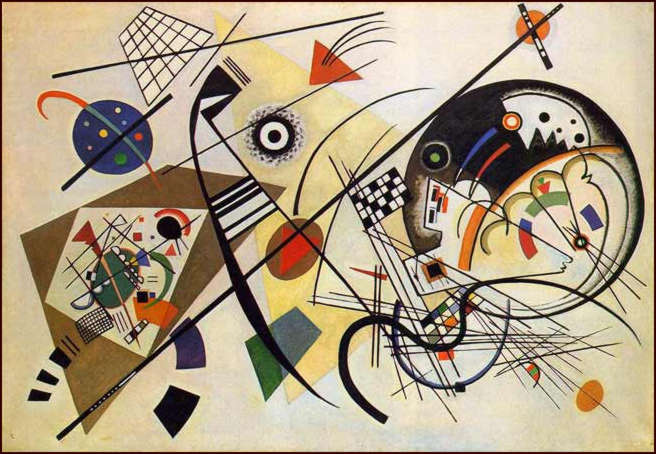
Bonnitta Roy gave an excellent, though mind-boggling, lecture at the Integral Theory Conference a couple of weeks ago - on what AQAL might look like in 2210. That was my first real exposure to her work and thinking, so I have been interested in her other work.
In response to something over at Facebook, she posted a link to this article she wrote for Integral Review back in 2006 (where she is an associate editor) - on the nature of integral art. But it goes deeper than that, too.
These brief sections are on the making of meta-maps and integral art - but I highly recommend the whole article (it's only 4 pages). This article is response to two previous articles by Matt Rentschler (both articles can be downloaded from http://multiplex.integralinstitute.org/Public/cs/files/35/integral_art/default.aspx).
[By the way, the current issue of Integral Review is focused on metatheory, for those who like the geeky stuff.]
The making of meta-mapsAnd this from the end of the article, where she quotes Gebser (one of my main integral heroes):
While there is a certain utility in organizing large amounts of knowledge in a generalized framework, in order to situate the reader with respect to the material, or to orient the reader with respect to the author’s own perspective, there is also a great deal of over-simplification that comes with the kind of systematic generalization it requires—oftentimes reducing rich ideas and complex human endeavor to conveniently distributed categories. This is the kind of approach that produces textbook primers, like those sweeping books on art history that introduce students to the various “art-isms:” expressionism, formalism, romanticism, neo-romanticism, and the like.
Rentschler’s article demonstrates how we can re-align these convenient judgments into AQAL terms. My sense of this, however, is that by doing so we are creating, as it were, a map twice-removed from the territory. It seems to me more valuable to describe how those primers failed us in the first place by giving us the impression that entire realms of human endeavor can be easily codified in such convenient terms as “expressionism” or “formalism” because they limit their interpretation to mono-logical domains.
It also seems to me that it would be more valuable to re-examine the actual territory, and look with new eyes—eyes that are liberated from the previous modes of interpretation that by delimiting experience into categories, also limit our experience to those categories. Not only to reiterate the subjective (in AQAL shorthand, the upper left or UL) aspect of Expressionism, for example, but to show how even Expressionism, which is conveniently judged to be an UL enterprise, is inextricably constituted by, and inimically interweaves itself into, all the other domains. To show that the convenient but partial truth about Expressionism is “it is UL;” but the inconvenient truth about Expressionism, as with all human endeavors, is the constant confronting and testing of limits, stretching and smashing of boundaries—creating and destroying interpretations all at once. No art, no artist, no enterprise, no idea, no methodology is ever situated in just one quadrant—however convenient to categorize them in such a way. It seems to me that an Integral approach on Expressionist artists would be to show how the regions of their minds, their work, their culture, their world, are in constant dynamic relationship, continually testing and crossing the tentative boundaries between domains of understanding and spheres of meaning. Doing this would, I believe, help us get closer to their territory.
Integral ArtNice article - just wanted to share.
In his seminal work The Ever Present Origin, Jean Gebser points out a critical distinction between the Rational Level tendency to codify perspectives, that is to arrange any number of perspectives according to their relations in systematic terms (aka, making maps) and the Integral Level which goes beyond the mapping of perspectives, beyond even the making of perspectives, into thinking and experiencing in a-perspectival ways. This is a difficult idea to come to terms with if one has already relegated (in one’s mind, through various exercises) all of the territory to a map of perspectives. If we have trained ourselves to see everything and everywhere through AQAL eyes, how can we understand the meaning of a-perspectival, or ever come to accepting such a possibility of a-perspectival thinking and experience? The significant question I have then, is how do we get from where we are, to Integral; from AQAL to A-perspectival? According to Gebser, we need a new form of statement:If we do not decide to risk “upsetting” some persons and things, and indicate the inadequacy of systems with their categorical rigidities, we will not be able to approach the new world reality. … [There] is a clear indication that the qualities of time which are today pressing toward awareness cannot be expressed in mere categorical systems. …We are compelled, in other words, to find a new form of statement. (Gebser, 1985, p. 308)As Integral writers, we need to be experimenting with new forms of statement. As integral thinkers, we need to go beyond the very horizons of thought and experience we have just recently come to define. Here is where Integral Art comes into play. Every age has their artists to forge the way into the next, to pierce through all our convenient truths into uncharted territory. We need only to be open to what they have to show and tell, despite the dissonance in us it might create, and in spite of all of what we know.
Reference:
Gebser, J. (1985). The ever-present origin. (N. Barstad, Trans.). Athens, OH: Ohio University Press. [Original work published 1949, 1953].
Tags:
No comments:
Post a Comment